10 Tips for Short Riders: Bike Set-Ups
I love adventure riding, especially since I don’t have to go far for the adventure to begin. I’m a 5'5" woman with a 29" inseam—I believe the politically correct term is “inseam-challenged,” but let’s just call a short rider “short.” As a former pro motocross racer turned instructor, I enjoy single-track and spirited, technical adventure riding. I usually do okay while I’m moving. It’s when I stop that I fall over. So, the first tip for my “fun size” friends is to keep a good sense of humor and always wear body armor. Here are my Top 10 tips for selecting a short rider motorcycle and setting it up properly.
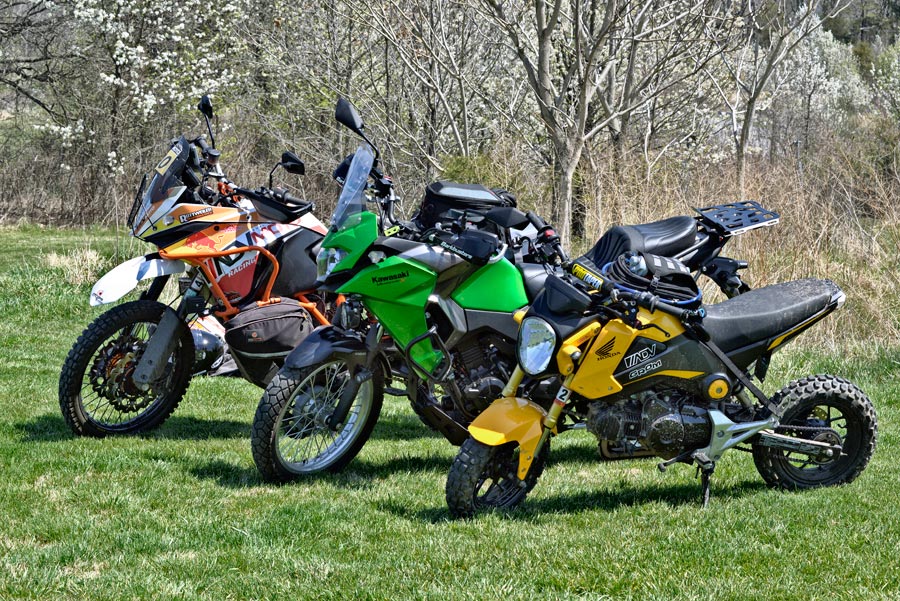
• Tip One: Buy the Bike that Fits You
You can get caught up in the latest, greatest, hottest adventure motorcycle, or you can choose the bike that fits you best and serves your needs. Don’t worry about what the cool kids are riding. Buy the bike that fits you.
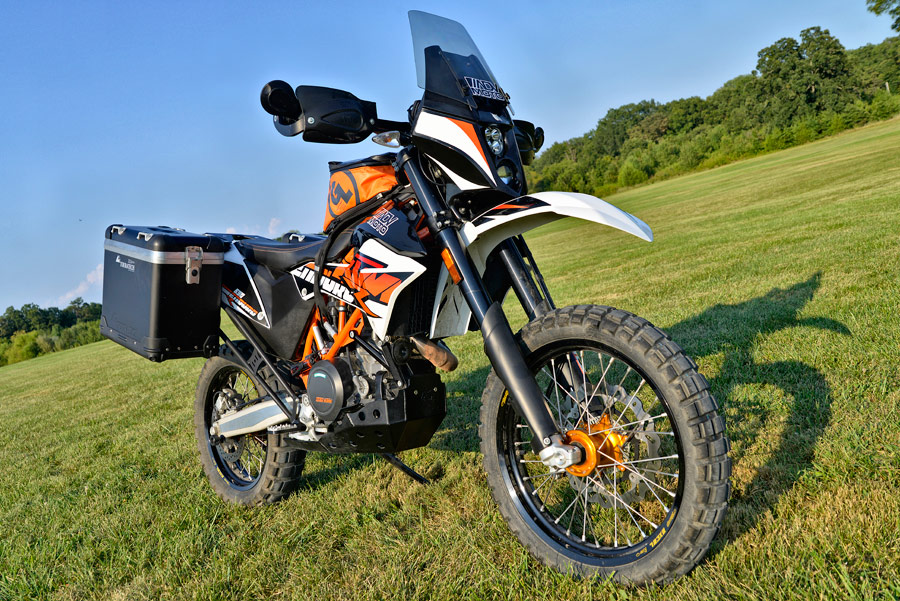
• Tip Two: Wheel Size
Adventure bikes typically come with either 21" or 19" front wheels. Both sizes are highly capable off road and on pavement. The taller 21" front wheel is optimized for more difficult off-road terrain. The smaller 19" front wheel is optimized for less aggressive riding. Larger front wheels usually translate into heavier duty, longer suspension, higher ground clearance, and higher seat height. If you’re a skilled, aggressive off-road rider, you’ll want the bigger front wheel. If you’re more casual and less skilled, 19" front wheel motorcycles will have a more accommodating seat height.
• Tip Three: Suspension
Suspension, the travel the front and rear wheels have to absorb, can be complicated and affects the motorcycle’s handling and comfort characteristics. Loosening the triple clamps allows the front fork tubes to raise up, effectively dropping the height of the front end. This inexpensive quick fix affects frame geometry and handling. Just make sure the front wheel doesn’t hit the front fender when you bottom out (think grabbing the front brake). A costlier, but better solution is to have a skilled suspension company modify the internals of the front forks to limit the travel. Stock spring rate on most bikes is 165 lb. If you’re lighter or heavier, proper springs will give you better control and a more comfortable ride.
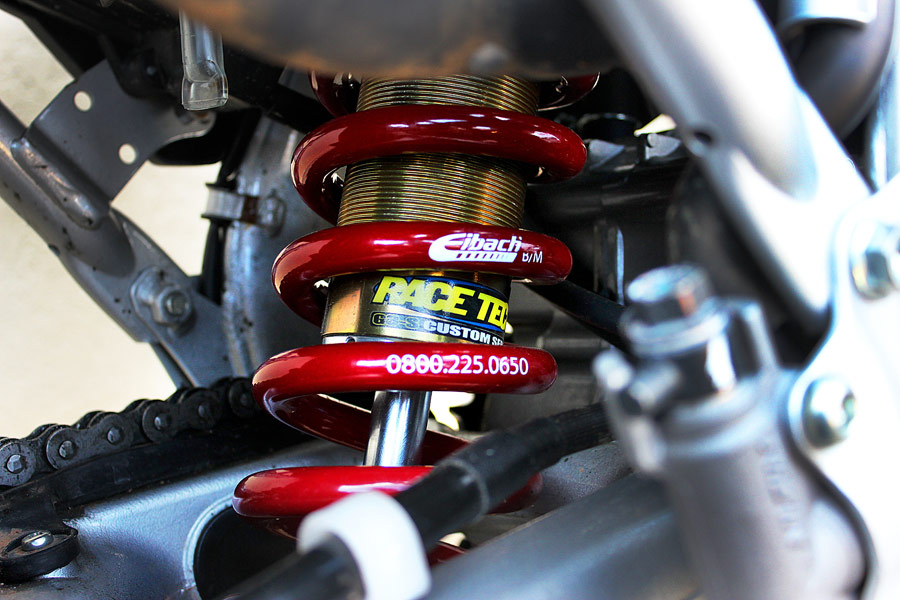
Ideally, any changes to the front suspension should be matched on the rear. Some bikes have linkage-style suspension where the rear shock attaches to the swingarm using links. The link (sometimes called dog bone) can be changed to lower the rear of the bike. However, on some bikes the rear shock attaches directly to the swingarm. Dropping the rear can mean inserting a spacer in the shock so it cannot extend fully, or replacing the shock with a shorter travel unit. Linkage solutions are inexpensive. A professional custom rear shock set-up for rider weight and riding style can be well worth the additional cost. And don’t forget, if you lower the suspension of your motorcycle, you will need to shorten the side stand as well. A good welder can handle this in a snap!
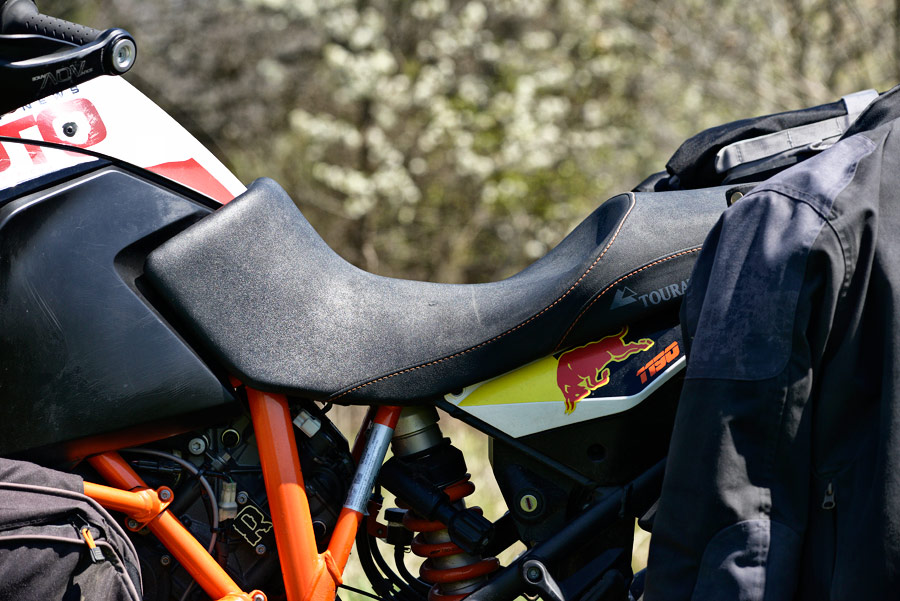
• Tip Four: Seat Height
Specifications for motorcycle seat heights are readily available; width of the saddle is not. Seat width has a dramatic effect on reaching the ground. Narrow saddles allow our desperate legs to reach the ground much more easily than wide saddles, which push our legs out at an angle making it harder to touch the ground. Various third-party seat manufacturers offer custom low and high seats for popular brands of motorcycles. Professional seat manufacturers also offer various types and densities of foam, gel pads, and seat covers. They can lower and narrow your seat without sacrificing comfort.
• Tip Five: Footpegs
Lowered seats may leave your legs cramped. Installing lowered foot pegs can give your legs more room. Be aware, if you have over-sized footpegs on your bike, that may also affect your reach to the ground. After I installed oversize pegs on my adventure bike, I almost fell over at a stoplight when I tried to put my foot down and the wider, longer, serrated pegs snagged my pant leg.
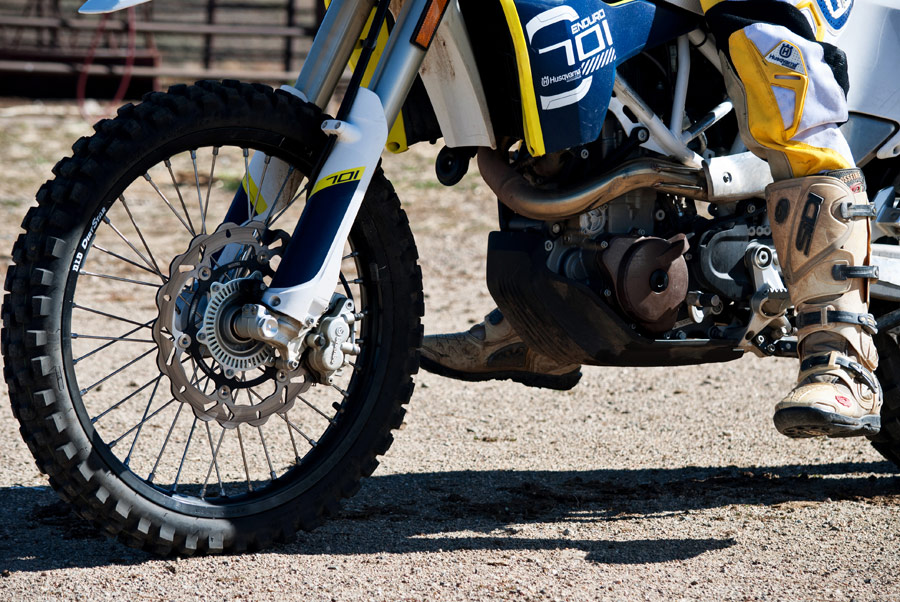
• Tip Six: Weight
Weight matters. I’ll start with some typical weights for various types of motorcycles. Single-track dirt bikes usually weigh less than 240 lb., dual-sports less than 360 lb., and full-blown adventure bikes often weigh 500 lb. or more.
• Tip Seven: Center of Gravity—
A motorcycle’s center of gravity affects how easy it is to balance. A lower center of gravity is more stable than a higher center of gravity. That’s why we want our heavy luggage down low and toward the middle of the bike. Weight, combined with center of gravity, is important for short riders. Especially women. Why? Because women have 40% less upper body muscle mass than men. This translates to significantly less upper body strength. Most women rely on the strength in their legs to control the motorcycle.
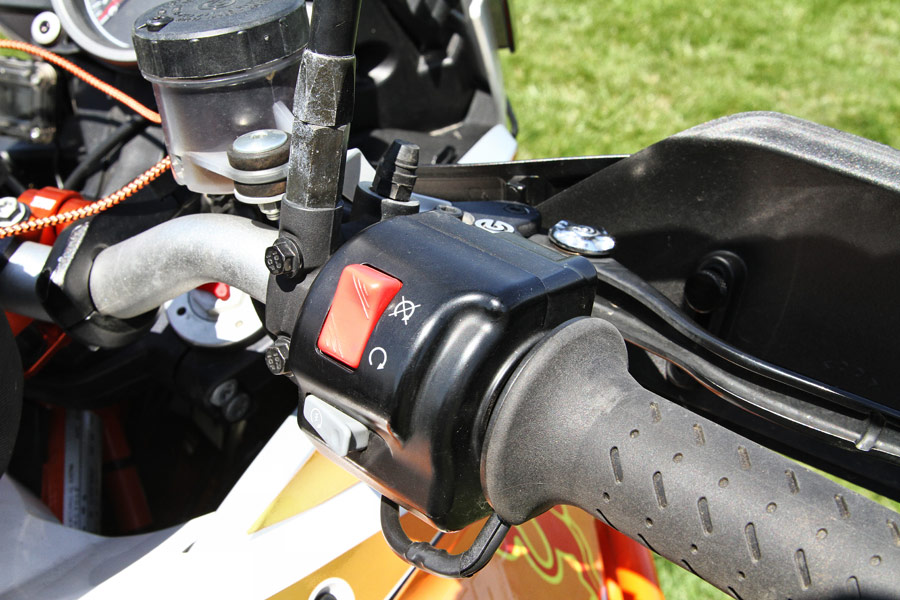
• Tip Eight: Electric Start
This tip applies to smaller dirt bikes and dual-sports. Electric start is your friend. I used to love my old Honda XR350 tractor and Kawasaki KDX220R until they stalled. Then, I’d have to find a place to get my foot down, reach down to flip out the kickstarter, and romp down on it. The button is easier.
• Tip Nine: Handlebars
Customizing handlebar and control placement and fit yields better control. Bar risers can be used to move handlebars up, down, forward and back to fit the rider. On my single-track and dual-sport bikes, I cut the width of my handlebars down to suit my shoulders. This is less fatiguing and improves maneuverability in tight trees and terrain. I use wider, standard-width handlebars on my 550-pound adventure bike to have more leverage of the heavier bike.
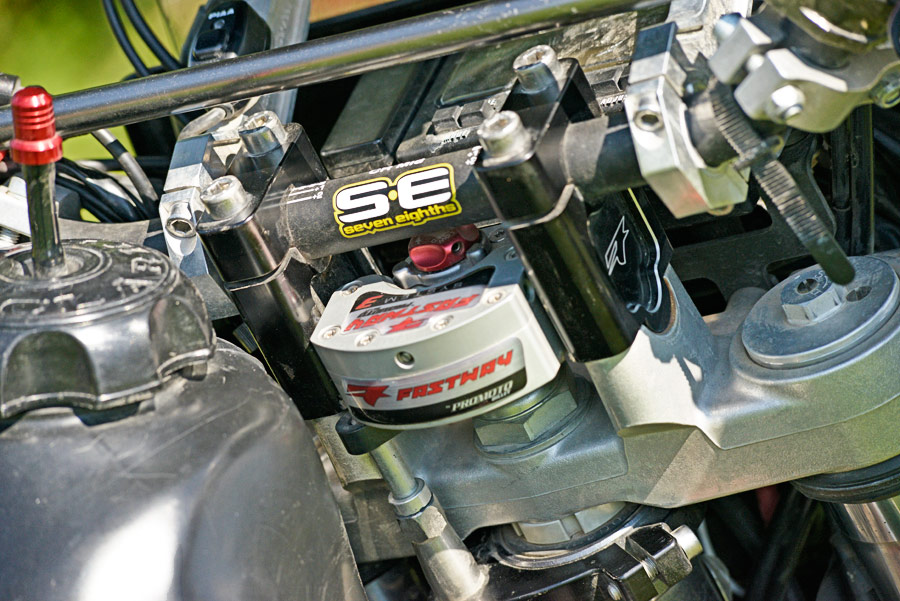
• Tip Ten: Controls
Flexible, adjustable clutch and brake levers are a great investment. Flexible levers don’t break when we tip over. Adjustable levers also allow riders to fit the lever to the rider’s finger length, giving more control. Some riders struggle pulling in the clutch. Sometimes softer springs in the clutch assembly help. If that’s not an option, lengthen the clutch actuator arm. This might mean fabricating the clutch arm, or you might be able to find a compatible part from a different model motorcycle. Keeping wired clutch cables clean and lubricated will really make a difference, too.
* * *
Short riders can comfortably and confidently ride any terrain with the right bike modified for their height and inseam. Choose the best bike for your physical stature, modify the motorcycle to fit your body, and practice the short rider techniques in my ADVMoto article (March/April 2018 edition).
See you on the trail—Pat
Click here to read Five Riding Techniques for Short Riders!
 Pat Jacques is a ground-breaking woman who has raced professionally in men’s motocross. Retired from racing, she still enjoys spirited single-track riding and adventure touring. Jacques’ passion is empowering women and getting families out riding motorcycles together. As the CEO of ADVWoman, Jacques holds an annual off-road training event in Granby, CO. The 2018 ADVWoman Rendezvous, scheduled for July 19–22, 2018, is taught by women and for women and their families. Jacques and coaches also lead Backcountry Discovery Route training tours and in 2019 will launch Zero to Hero, a comprehensive training program for new riders. ADVWoman.com
Pat Jacques is a ground-breaking woman who has raced professionally in men’s motocross. Retired from racing, she still enjoys spirited single-track riding and adventure touring. Jacques’ passion is empowering women and getting families out riding motorcycles together. As the CEO of ADVWoman, Jacques holds an annual off-road training event in Granby, CO. The 2018 ADVWoman Rendezvous, scheduled for July 19–22, 2018, is taught by women and for women and their families. Jacques and coaches also lead Backcountry Discovery Route training tours and in 2019 will launch Zero to Hero, a comprehensive training program for new riders. ADVWoman.com 


